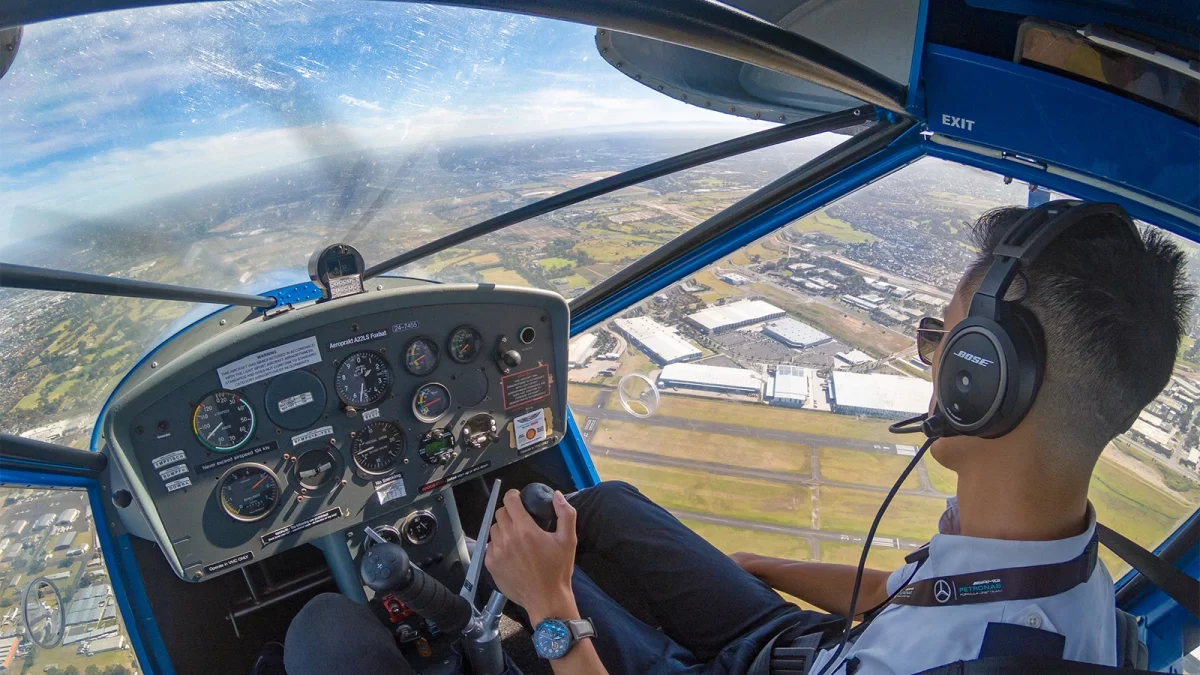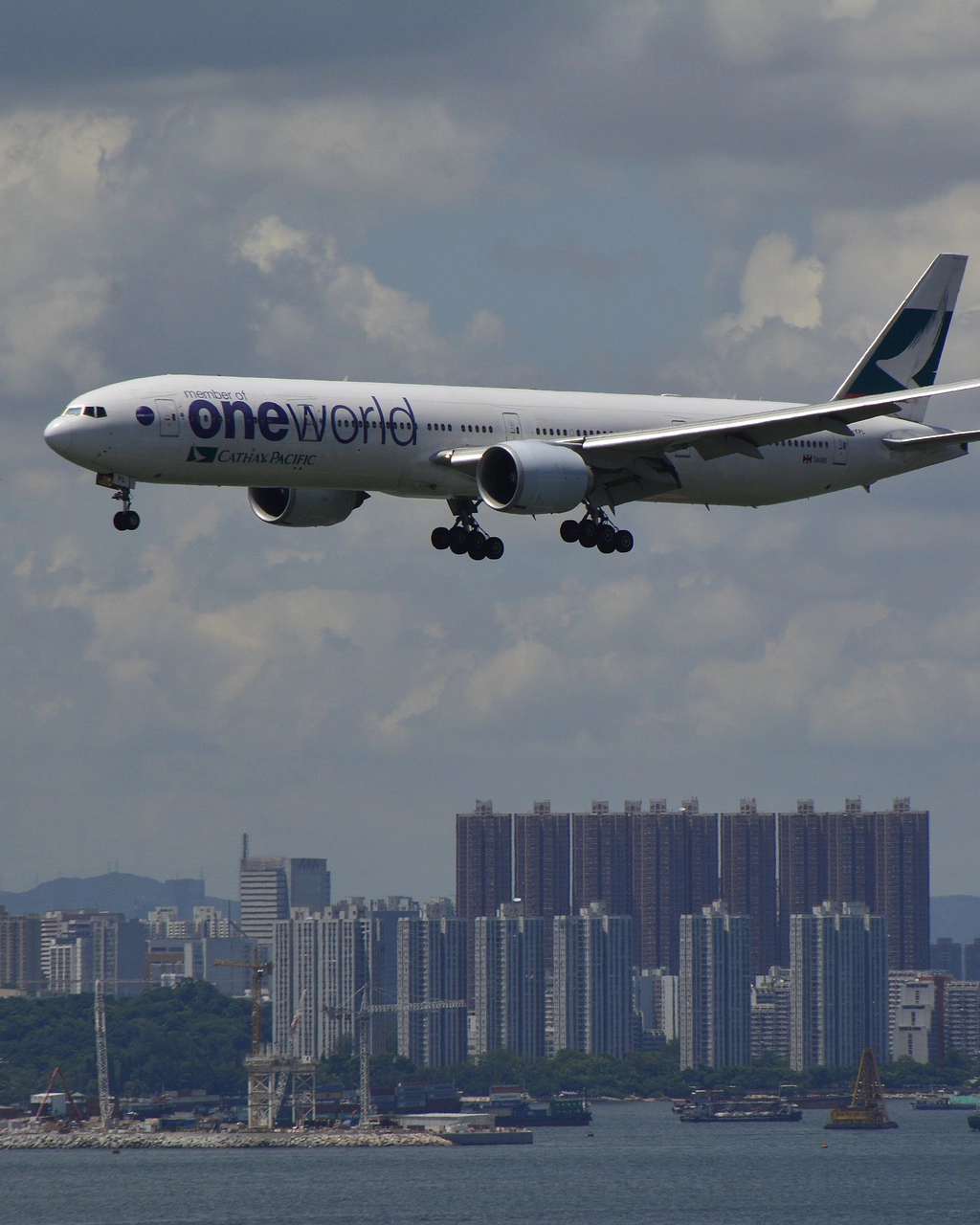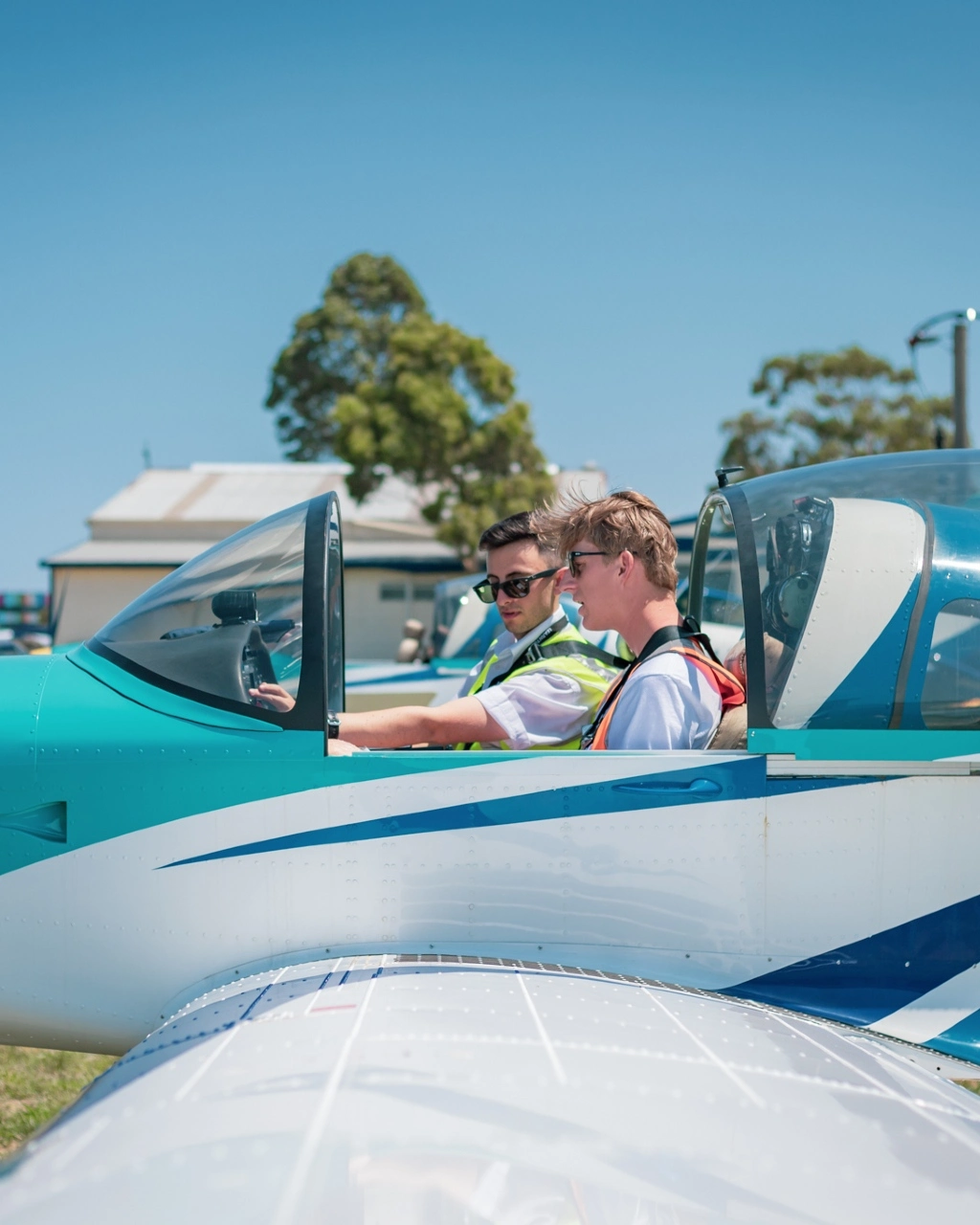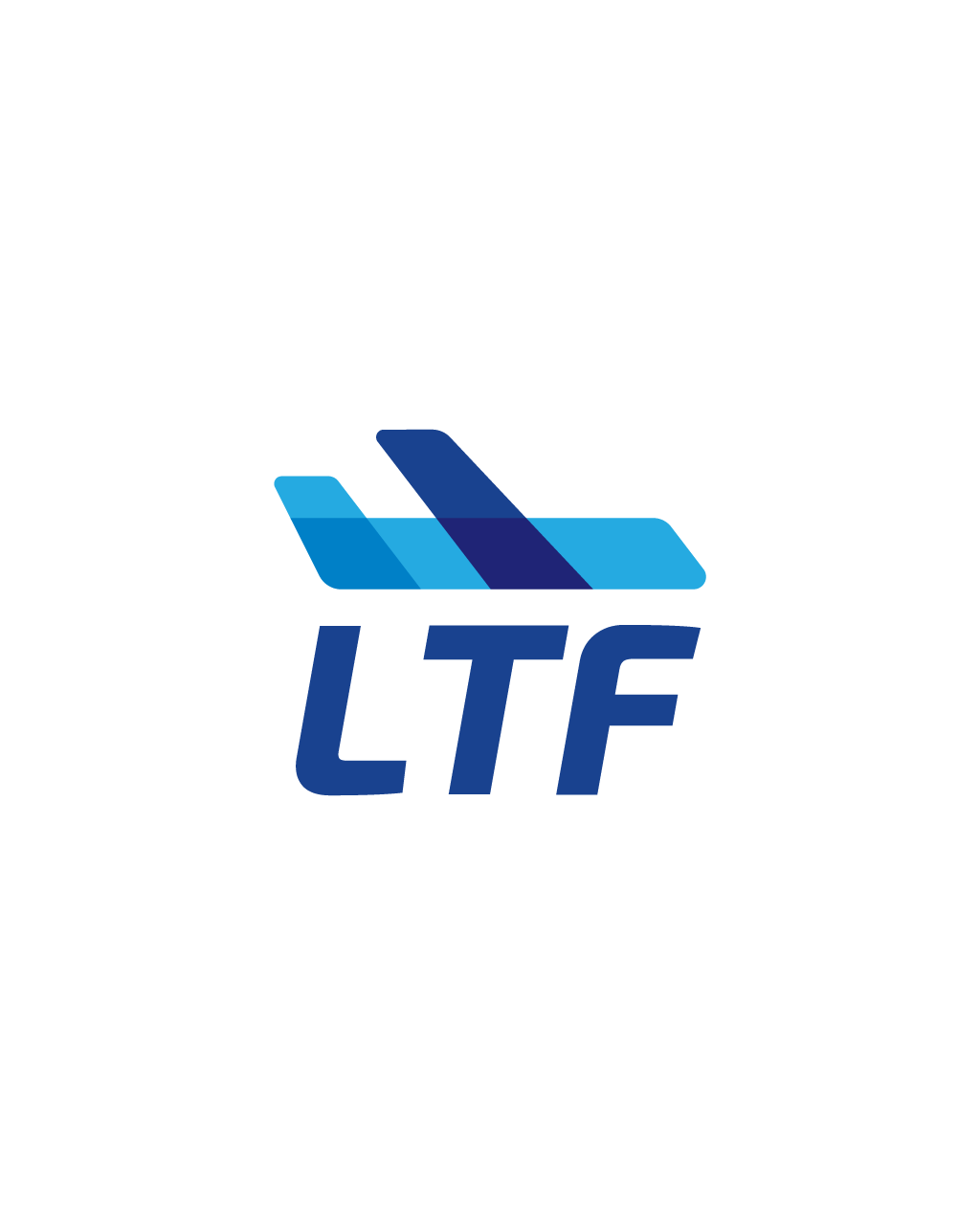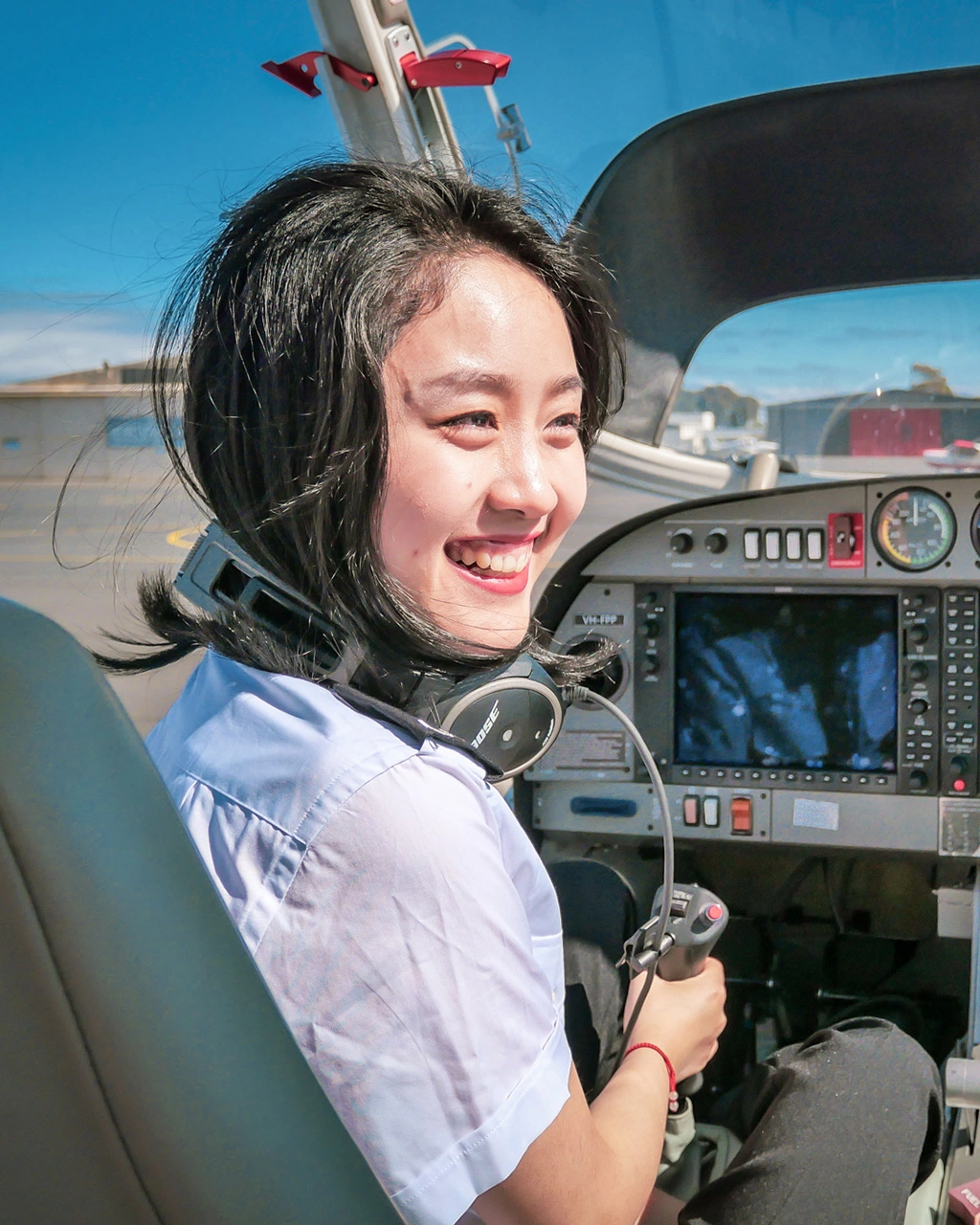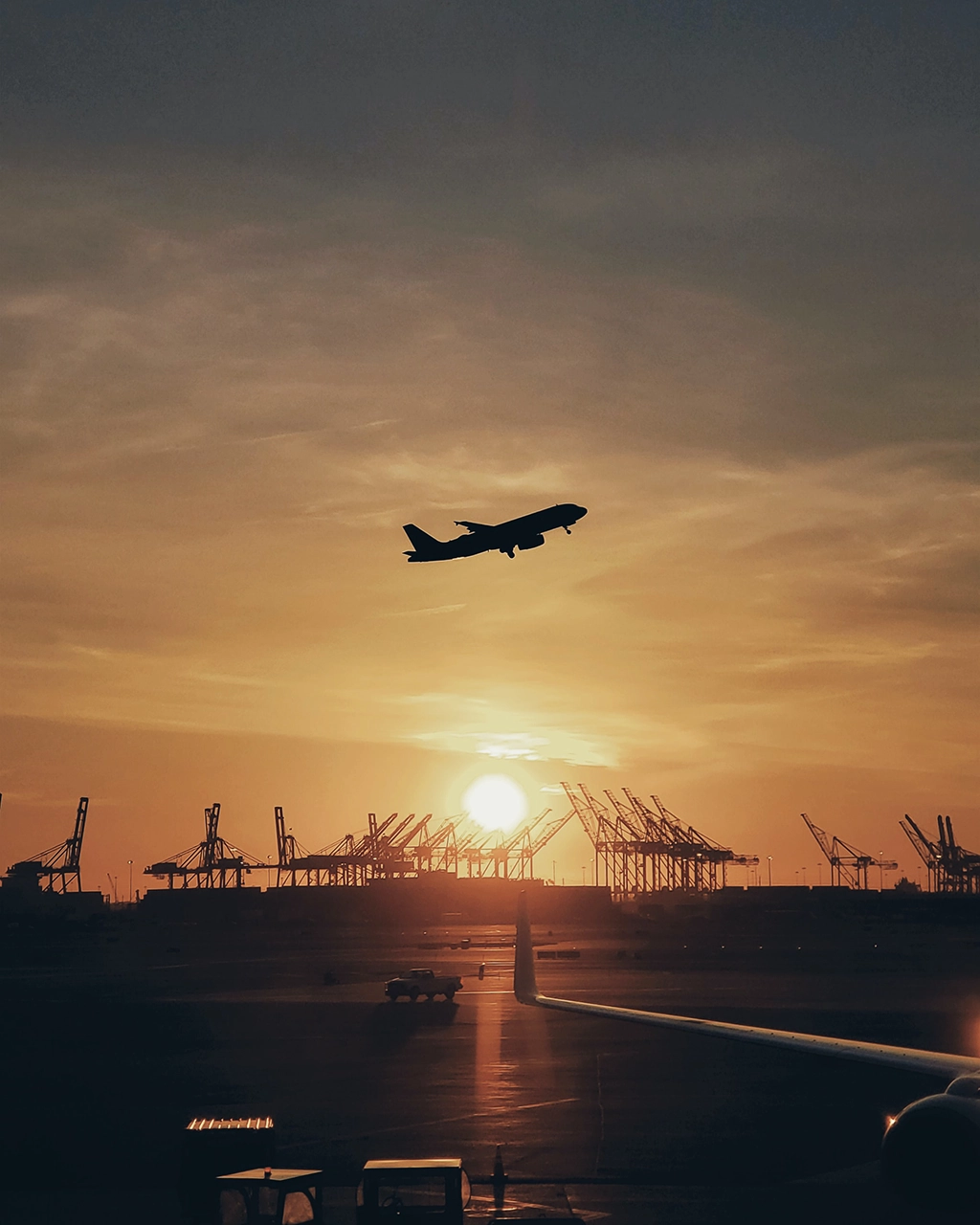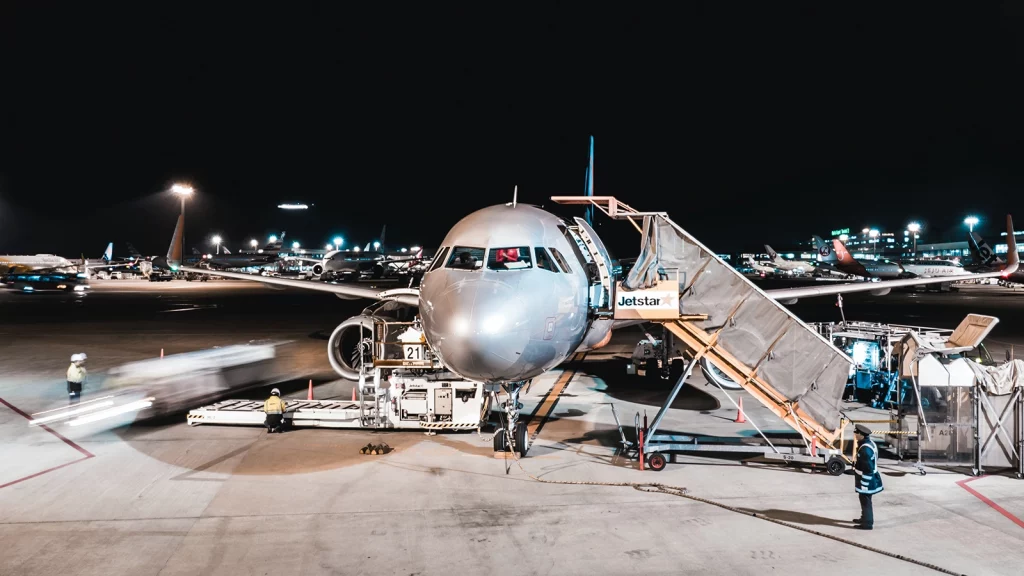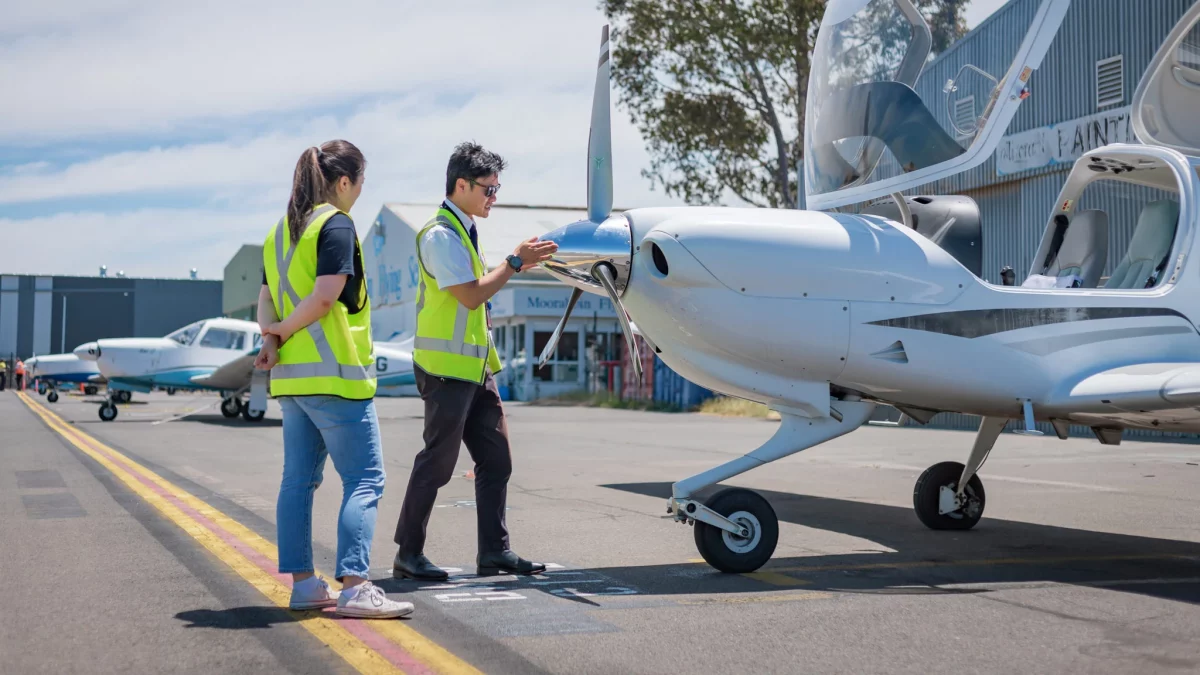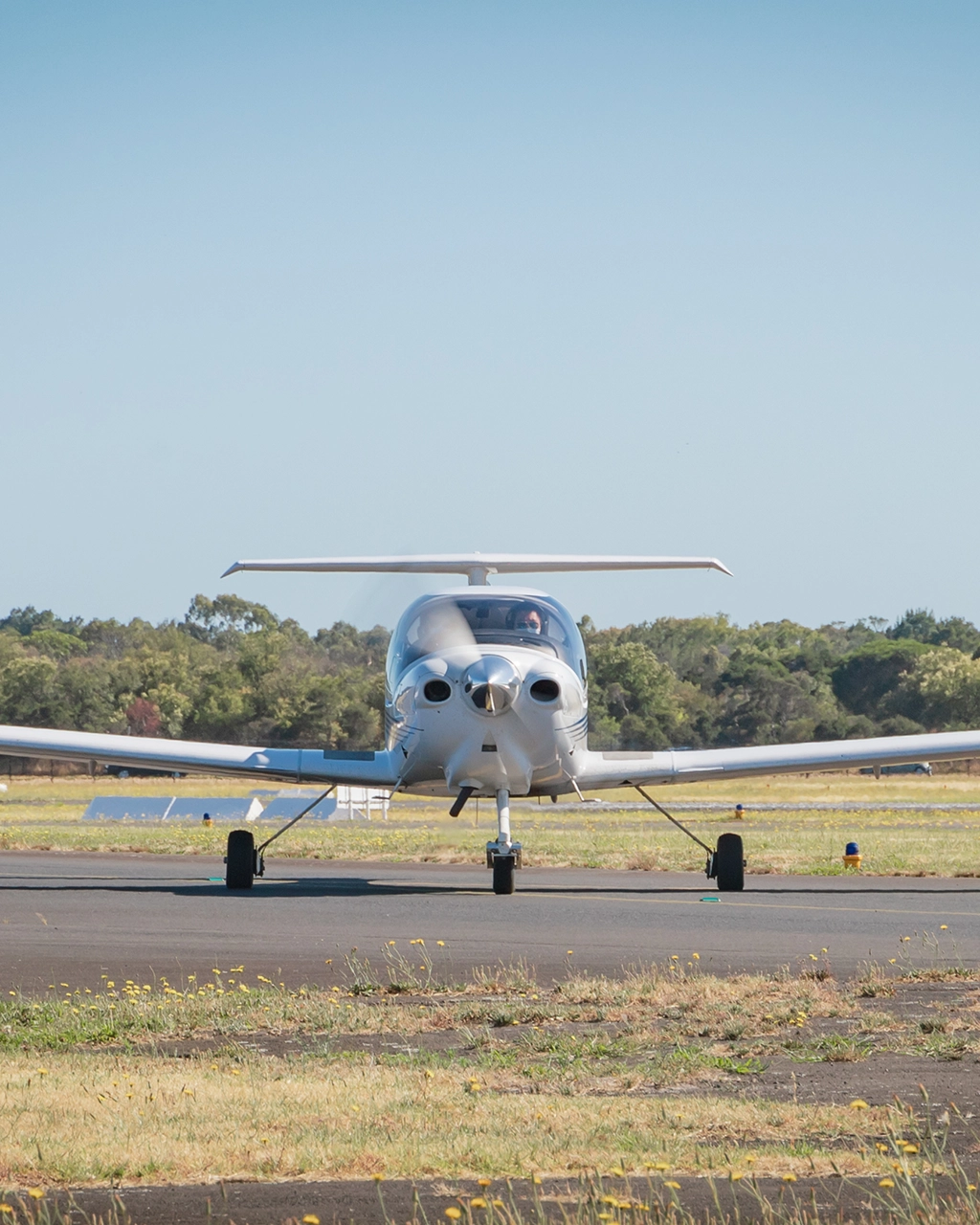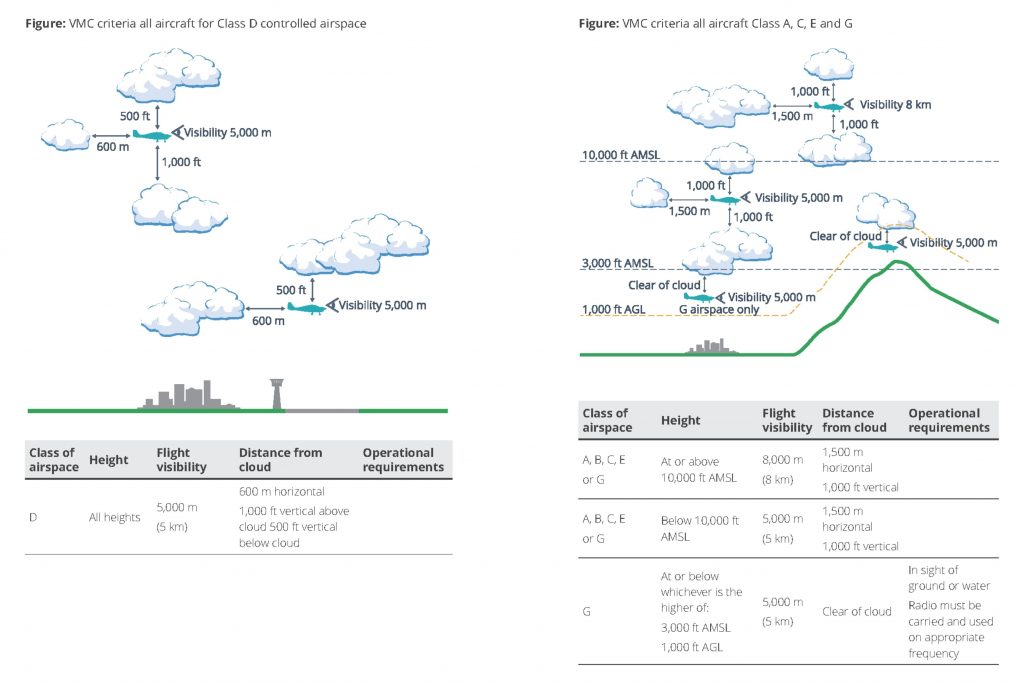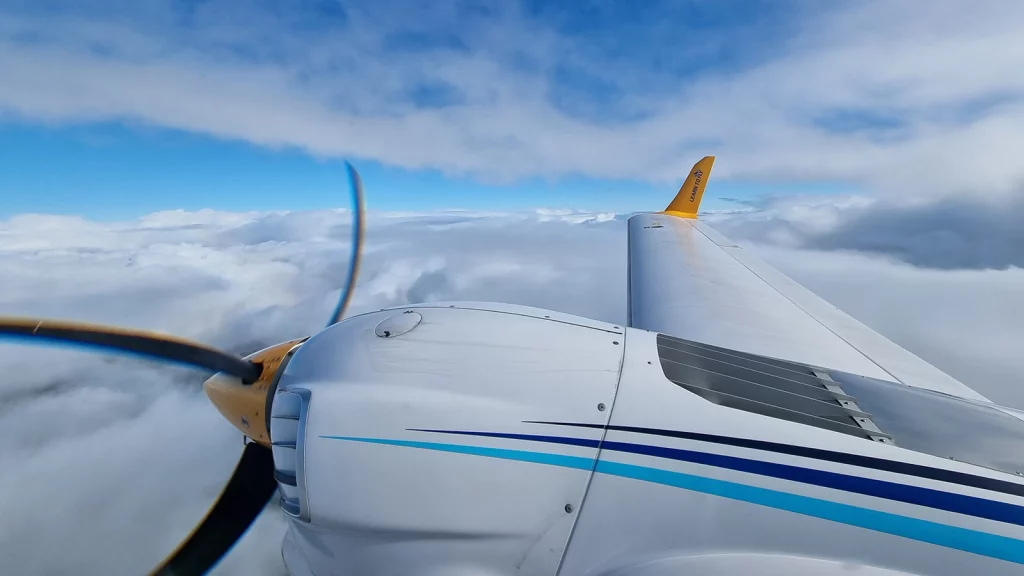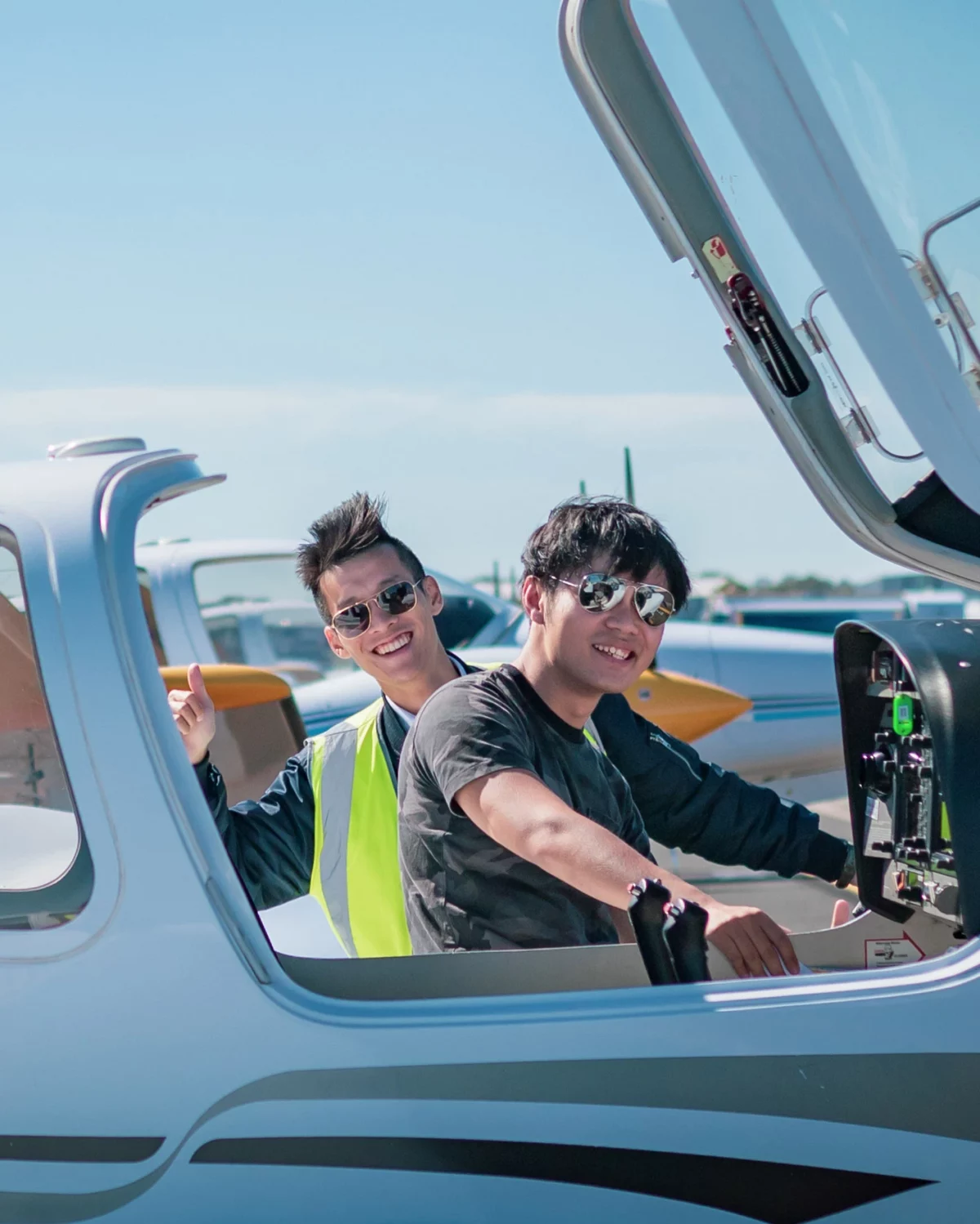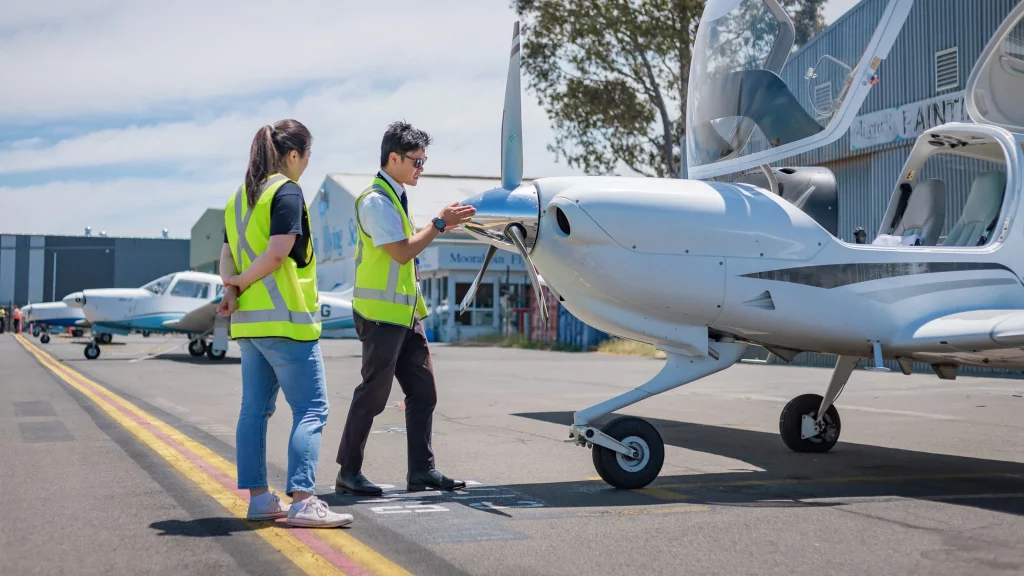Have you always dreamed about flying but aren’t sure how it will feel once you’re in the air? Now is the perfect time to get behind the controls on a trial introductory flight. A Trial Introductory Flight (TIF) is an experience that has been created to give you a good idea of how it feels to fly a light aircraft, and also to give you a look at how flight training courses at Learn to Fly are run.
Lots of people will do a TIF as an amazing once-off experience. However, it does also count as part of the CASA flying syllabus. This means that if you do decide to take flight training further, you will have already taken the first step. You can then continue towards getting your Recreational Pilot Licence (RPL), Private Pilot Licence (PPL) or Commercial Pilot Licence (CPL).
What You Will Experience on a Trial Introductory Flight
The first steps of your Trial Introductory Flight do, of course, start on the ground. Your instructor will take you through an in-depth explanation on how the aeroplane you are flying functions, along with a discussion of aerodynamics and what to expect during your flight. After this, you will accompany your instructor on their pre-flight examination of the aircraft where you are encouraged to ask any questions you may have. Even if you’re not intending to begin a career as a pilot, you will gain a whole lot more from the experience if you ask questions and are ready to learn.
Once you get settled into the cockpit and are cleared for takeoff, you will take to the sky with your highly trained instructor. They will lead you through some flying methods, manoeuvres and skills. Then, you will then get the chance to take the controls and perform those same manoeuvres, under the watchful eye of your instructor. They can take the controls back at short notice at any time. It’s a great way to get in the air and see how you feel in control of the aircraft, while still knowing that you are fully safe.
Do You Need Any Experience?
Not at all! The trial flight is for beginners, so you do not need to know anything about aircraft or have any previous flight training course experience, or even any flight theory knowledge. The whole point of the TIF is for people without any flight experience to get an idea of how it feels being up in the air. This way, you can give it a go with no fears or lengthy training. There is no need to study before your TIF – your instructor will teach you everything you need to know.
What Planes Will You be Able to Fly?
Sling Aircraft Sling 2 LSA
The Sling 2 LSA is an aircraft built from aluminium, designed by Sling Aircraft Ltd. The Sling 2 LSA aircraft was initially designed to be a cross country and recreational aircraft. However, due to its amazing and tight handling, it has become a well loved training aircraft. It sports near 360-degree panoramic visibility, 7-hour fuel range and high-performance design.
Aeroprakt Foxbat A22LS
The Aeroprakt A-22 Foxbat is an ultra-light two seater aircraft with a simple to understand 3-axis control system. Transparent doors of the aircraft provide outstanding visibility. The combination of simple controls and low stall speed make the Foxbat an excellent aircraft for first flights.
Cessna Skyhawk 172
The Cessna 172 Skyhawk has four seats and is used primarily for training and/or private aviation. It’s also the most popular aircraft ever built, with over 44,000 being produced worldwide since its creation in 1955, and new models still in production today.
Diamond Aircraft DA40
Designed in Austria, the Diamond DA40 aircraft is a modern and reliable four-seater aircraft. It is constructed from lightweight material, with glass G1000 cockpit avionics. The aircraft provides a great balance between performance and durability, making it a perfect training aircraft.
So, Why Not Give it a Go?!
We are ready to give you the thrilling experience of flying a plane for the first time! We also want to make absolutely sure the experience is a memorable one. This is why we also offer some additional add-ons for your flight. These include a GoPro or 360 degree video, or a certificate to commemorate your time in the air.
If you have ever wanted to know what it feels like to fly a plane, and are looking for a way to take the controls without commitment, a Trial Introductory Flight is a great place to start. Get in contact with our friendly team today to book yourself a session!









